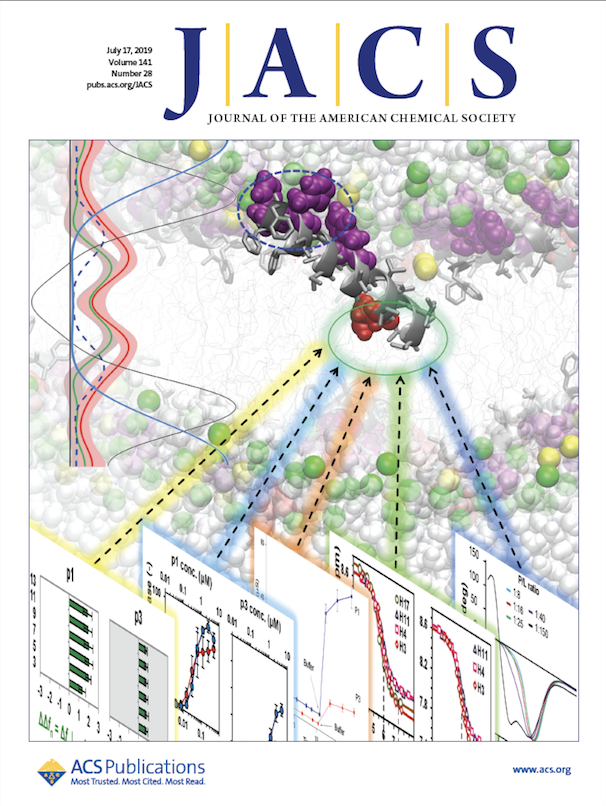Cotten group discovers complementary modes of antimicrobial action by fish peptides

A Family of Fish Peptides Attack Bacteria in Complementary Ways that Could Inspire New Antimicrobial Treatments
Scientists have discovered that fish peptides from the same family exhibit different modes of antimicrobial action. Their complementary effects on membranes and nucleic acids could inspire researchers to design novel anti-infective therapeutics to fight drug-resistant pathogens.
Williamsburg, VA, July 2019 - Have you ever thought about fish gills as amazing scientific wonders? That is the message learned from a new study done by researchers at William & Mary and featured this week on the cover of the flagship journal of the American Chemical Society. As aquatic creatures, fish are astonishingly fit to survive in harsh environments that equate very much to bacteria-laden soups. But how do they do this? Through millions of years of adaptation to their surroundings, they have developed a robust innate immune system.
The study, which is funded by the National Science Foundation, focused on peptides, small proteins from the immune system of rockfish or striped bass, a highly prized fish in numerous bodies of water around the world, including the Chesapeake Bay near William & Mary. Judiciously named piscidins after “pisces”, the Latin word for fish, these peptides kill within minutes a panoply of pathogens, including drug resistant bacteria, viruses, and cancer cells.
For years, Professor Myriam Cotten and her collaborators have studied several piscidins assuming that one size fits all, i.e. that these peptides all attack pathogens in the same way. But their recent work reveals a twist in the story that could inspire the design of novel therapeutics that work in complementary ways, just as these peptides do in nature.
At the core of the study is the investigation of how piscidins attach to pathogenic cells, such as bacteria, and breach the thin membrane that surrounds them. Since pathogenic and cancerous cell membranes carry negative charges on their surface, the positively-charged fish peptides are readily attracted to these cells.
Belonging to the same family, the piscidins share many traits, including their size and shape. But just as we can jump off the diving board head or feet first, these peptides, in spite of being siblings, have distinctively different ways of attacking and killing pathogens. In fact, the W&M scientists and their collaborators at various institutions across the country, including Ella Mihailescu at the University of Maryland, found that piscidin 1 version that is more disruptive to membranes and more resistant to changes in pH goes in using its carboxyl end (feet) while piscidin 3, the member that is less active on membranes but enters cells to damage DNA, uses its N-terminus (head).
The important implication of the complementary modes of action featured by families of naturally-occurring peptides is that it could help researchers design drugs that use a multi-pronged attack to kill pathogens by damaging not only their cell membranes but also DNA.
Next time you come across rockfish, remember that they may be an inspiration for important advances in drug discovery, which could lead to new antibiotic compounds that do not induce bacterial resistance.















